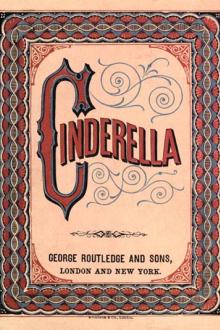The Crown of Wild Olive by John Ruskin (a court of thorns and roses ebook free .TXT) 📕

Read free book «The Crown of Wild Olive by John Ruskin (a court of thorns and roses ebook free .TXT) 📕» - read online or download for free at americanlibrarybooks.com
- Author: John Ruskin
- Performer: -
Read book online «The Crown of Wild Olive by John Ruskin (a court of thorns and roses ebook free .TXT) 📕». Author - John Ruskin
The system of his color being thus simplified, he could address all the strength of his mind to the accumulation of facts of form; his choice of subject, and his methods of treatment, are therefore as various as his color is simple; and it is not a little difficult to give the reader who is unacquainted with his works, an idea either of their infinitude of aims, on the one hand, or of the kind of feeling which prevades them all, on the other. No subject was too low or too high for him; we find him one day hard at work on a cock and hen, with their family of chickens in a farm-yard; and bringing all the refinement of his execution into play to express the texture of the plumage; next day, he is drawing the Dragon of Colchis. One hour he is much interested in a gust of wind blowing away an old woman's cap; the next he is painting the fifth plague of Egypt. Every landscape painter before him had acquired distinction by confining his efforts to one class of subject. Hobbima painted oaks; Ruysdael, waterfalls and copses; Cuyp, river or meadow scenes in quiet afternoons; Salvator and Poussin, such kind of mountain scenery as people could conceive, who lived in towns in the seventeenth century. But I am well persuaded that if all the works of Turner, up to the year 1820, were divided into classes (as he has himself divided them in the Liber Studiorum), no preponderance could be assigned to one class over another. There is architecture, including a large number of formal "gentlemen's seats," I suppose drawings commissioned by the owners; then lowland pastoral scenery of every kind, including nearly all farming operations,—ploughing, harrowing, hedging and ditching, felling trees, sheep-washing, and I know not what else; then all kinds of town life—court-yards of inns, starting of mail coaches, interiors of shops, house-buildings, fairs, elections, &c.; then all kinds of inner domestic life—interiors of rooms, studies of costumes, of still life, and heraldry, including multitudes of symbolical vignettes; then marine scenery of every kind, full of local incident; every kind of boat and method of fishing for particular fish, being specifically drawn, round the whole coast of England;—pilchard fishing at St. Ives, whiting fishing at Margate, herring at Loch Fyne; and all kinds of shipping, including studies of every separate part of the vessels, and many marine battle-pieces, two in particular of Trafalgar, both of high importance,—one of the Victory after the battle, now in Greenwich Hospital; another of the Death of Nelson, in his own gallery; then all kinds of mountain scenery, some idealised into compositions, others of definite localities; together with classical compositions, Romes and Carthages and such others, by the myriad, with mythological, historical, or allegorical figures,—nymphs, monsters, and spectres; heroes and divinities.[100]
What general feeling, it may be asked incredulously, can possibly pervade all this? This, the greatest of all feelings—an utter forgetfulness of self. Throughout the whole period with which we are at present concerned, Turner appears as a man of sympathy absolutely infinite—a sympathy so all-embracing, that I know nothing but that of Shakespeare comparable with it. A soldier's wife resting by the roadside is not beneath it; Rizpah, the daughter of Aiah, watching the dead bodies of her sons, not above it. Nothing can possibly be so mean as that it will not interest his whole mind, and carry away his whole heart; nothing so great or solemn but that he can raise himself into harmony with it; and it is impossible to prophesy of him at any moment, whether, the next, he will be in laughter or in tears.
This is the root of the man's greatness; and it follows as a matter of course that this sympathy must give him a subtle power of expression, even of the characters of mere material things, such as no other painter ever possessed. The man who can best feel the difference between rudeness and tenderness in humanity, perceives also more difference between the branches of an oak and a willow than any one else would; and therefore, necessarily the most striking character of the drawings themselves is the speciality of whatever they represent—the thorough stiffness of what is stiff, and grace of what is graceful, and vastness of what is vast; but through and beyond all this, the condition of the mind of the painter himself is easily enough discoverable by comparison of a large number of the drawings. It is singularly serene and peaceful: in itself quite passionless, though entering with ease into the external passion which it contemplates. By the effort of its will it sympathises with tumult or distress, even in their extremes, but there is no tumult, no sorrow in itself, only a chastened and exquisitely peaceful cheerfulness, deeply meditative; touched without loss of its own perfect balance, by sadness on the one side, and stooping to playfulness upon the other. I shall never cease to regret the destruction, by fire, now several years ago, of a drawing which always seemed to me to be the perfect image of the painter's mind at this period,—the drawing of Brignal Church near Rokeby, of which a feeble idea may still be gathered from the engraving (in the Yorkshire series). The spectator stands on the "Brignal banks," looking down into the glen at twilight; the sky is still full of soft rays, though the sun is gone; and the Greta glances brightly in the valley, singing its evening-song; two white clouds, following each other, move without wind through the hollows of the ravine, and others lie couched on the far away moorlands; every leaf of the woods is still in the delicate air; a boy's kite, incapable of rising, has become entangled in their branches, he is climbing to recover it; and just behind it in the picture, almost indicated by it, the lowly church is seen in its secluded field between the rocks and the stream; and around it the low churchyard wall, and the few white stones which mark the resting places of those who can climb the rocks no more, nor hear the river sing as it passes.
There are many other existing drawings which indicate the same character of mind, though I think none so touching or so beautiful; yet they are not, as I said above, more numerous than those which express his sympathy with sublimer or more active scenes; but they are almost always marked by a tenderness of execution, and have a look of being beloved in every part of them, which shows them to be the truest expression of his own feelings.
One other characteristic of his mind at this period remains to be noticed—its reverence for talent in others. Not the reverence which acts upon the practices of men as if they were the laws of nature, but that which is ready to appreciate the power, and receive the assistance, of every mind which has been previously employed in the same direction, so far as its teaching seems to be consistent with the great text-book of nature itself. Turner thus studied almost every preceding landscape painter, chiefly Claude, Poussin, Vandevelde, Loutherbourg, and Wilson. It was probably by the Sir George Beaumonts and other feeble conventionalists of the period, that he was persuaded to devote his attention to the works of these men; and his having done so will be thought, a few scores of years hence, evidence of perhaps the greatest modesty ever shown by a man of original power. Modesty at once admirable and unfortunate, for the study of the works of Vandevelde and Claude was productive of unmixed mischief to him; he spoiled many of his marine pictures, as for instance Lord Ellesmere's, by imitation of the former; and from the latter learned a false ideal, which confirmed by the notions of Greek art prevalent in London in the beginning of this century, has manifested itself in many vulgarities in his composition pictures, vulgarities which may perhaps be best expressed by the general term "Twickenham Classicism," as consisting principally in conceptions of ancient or of rural life such as have influenced the erection of most of our suburban villas. From Nicolo Poussin and Loutherbourg he seems to have derived advantage; perhaps also from Wilson; and much in his subsequent travels from far higher men, especially Tintoret and Paul Veronese. I have myself heard him speaking with singular delight of the putting in of the beech leaves in the upper right-hand corner of Titian's Peter Martyr. I cannot in any of his works trace the slightest influence of Salvator; and I am not surprised at it, for though Salvator was a man of far higher powers than either Vandevelde or Claude, he was a wilful and gross caricaturist. Turner would condescend to be helped by feeble men, but could not be corrupted by false men. Besides, he had never himself seen classical life, and Claude was represented to him as competent authority for it. But he had seen mountains and torrents, and knew therefore that Salvator could not paint them.
One of the most characteristic drawings of this period fortunately bears a date, 1818, and brings us within two years of another dated drawing, no less characteristic of what I shall henceforward call Turner's Second period. It is in the possession of Mr. Hawkesworth Fawkes of Farnley, one of Turner's earliest and truest friends; and bears the inscription, unusually conspicuous, heaving itself up and down over the eminences of the foreground—"Passage of Mont Cenis. J. M. W. Turner, January 15th, 1820."
The scene is on the summit of the pass close to the hospice, or what seems to have been a hospice at that time,—I do not remember such at present,—a small square-built house, built as if partly for a fortress, with a detached flight of stone steps in front of it, and a kind of drawbridge to the door. This building, about 400 or 500 yards off, is seen in a dim, ashy grey against the light, which by help of a violent blast of mountain wind has broken through the depth of clouds which hangs upon the crags. There is no sky, properly so called, nothing but this roof of drifting cloud; but neither is there any weight of darkness—the high air is too thin for it,—all savage, howling, and luminous with cold, the massy bases of the granite hills jutting out here and there grimly through the snow wreaths. There is a desolate-looking refuge on the left, with its number 16, marked on it in long ghastly figures, and the wind is drifting the snow off the roof and through its window in a frantic whirl; the near ground is all wan with half-thawed, half-trampled snow; a diligence in front, whose horses, unable to face the wind, have turned right round with fright, its passengers struggling to escape, jammed in the window; a little farther on is another carriage off the road, some figures pushing at its wheels, and its driver at the horses' heads, pulling and lashing with all his strength, his lifted arm stretched out against the light of the distance, though too far off for the whip to be seen.
Now I am perfectly certain that any one thoroughly accustomed





Comments (0)